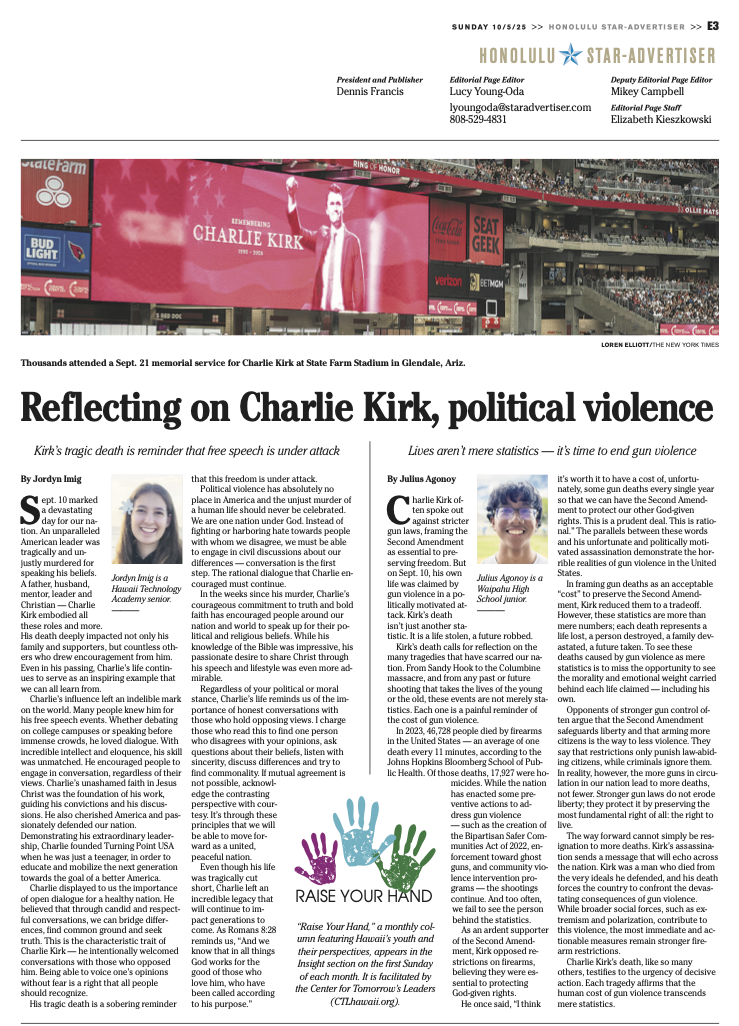Amid the relative quietness of Hawaii’s political landscape, the most consequential election of this year is one over 5,000 miles away: the New York City mayoral race. It’s a three-man race among Democrat Zohran Mamdani, Republican Curtis Sliwa and former New York Gov. Andrew Cuomo who is running as an independent.
The following editorial was originally published in the Honolulu Star-Advertiser on Sunday, October 5th as part of the “Raise Your Hand” column in the Insight section.
By:
Julius Agonoy - Waipahu High School, 11th grade
Jordyn Imig - Hanalani Schools, 11th grade

Related Articles
When I first stepped into Puʻuhonua O Waiʻanae, a village of more than 250 houseless
individuals near the Waiʻanae Boat Harbor, I expected to see hardship. What I didn’t expect was
to find community, leadership, and above all, family.
How many times have you picked up your phone today? If you’re like most people, the answer is
roughly 96 times, or once every 10 minutes. For teenagers, the numbers are even more alarming.
Teens spend over seven hours on their phone per day on average, according to Common Sense
Media.
We all have something we just don’t get. Maybe it’s car maintenance or writing a decent
essay. Whatever it is, it often becomes an unnecessary source of shame. For many senior
citizens, that “thing” is technology. While this might seem like a harmless or inevitable
generational gap, the reality is more serious: Our kupuna are falling behind because they don’t
have the support they need to keep up in an increasingly digital world.
